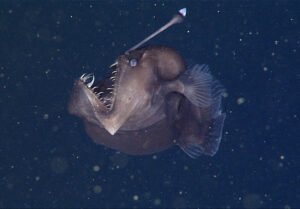Sperm whales are pelagic mammals that are known for their ability to hunt and destroy squids, including colossal ones. They spend most of their lives in the higher parts of the water, but sometimes they dive into deeper parts of the ocean to hunt. These whales can dive to depths of up to 2,500 meters.
Female sperm whales live in groups with other females and their calves. They do this to help each other protect their young from wolfpacks of killer whales, and to take care of them. The females give birth every 4 to 20 years. Males, on the other hand, live alone after the breeding season.
The average male sperm whale reaches 16 meters in length and weighs about 45 tons. Females are about 10 meters in length and weigh about 14 tons. Sperm whales use echolocation with a strength of about 240 decibels to locate themselves and squids in the twilight and midnight zone. They even hunt the largest squids, which do not give up without a fight. These fights leave the whales with scars, and sometimes the squids win.
When a sperm whale dies, its body becomes a big gift to the animals living at the bottom of the ocean. These whales have the largest brain on earth, up to 5 times larger than a human’s brain. They can even sleep, and when they do, they are in a vertical position in the water.
In the 19th century, the whaling industry nearly drove sperm whales to extinction. This was because spermaceti, a valuable substance found in their heads, was highly sought after. Spermaceti was used to fuel kerosene lamps and provided the longest lasting source of energy. Thankfully, sperm whales are now protected.
Interestingly, there is a story of a sperm whale causing the sinking of the Essex ship. The whale rammed and sank the ship approximately 2,000 meters from the shoreline.



